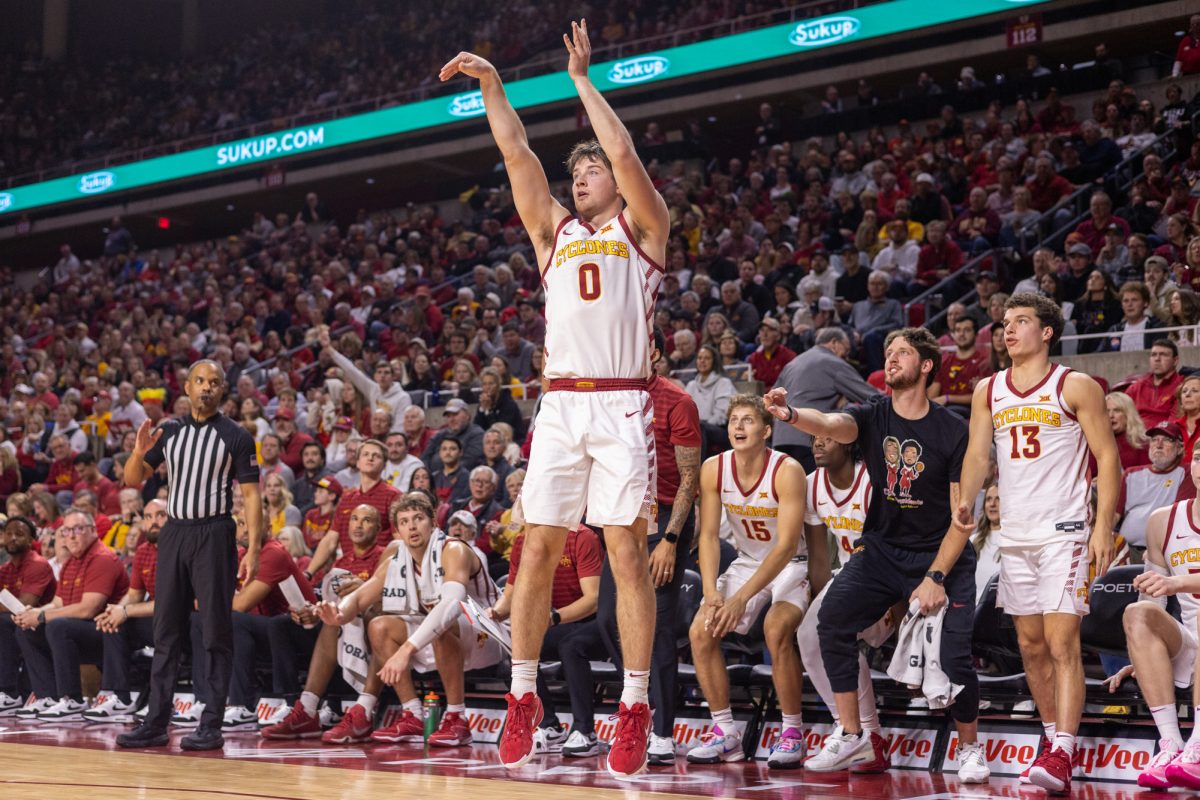COLUMN:The crime of shrinking products
November 7, 2002
Take a look at the last large package of M&M’s you bought. What size is it? If it’s 16 or 17.6 ounces, you haven’t been shopping recently. The little chocolate candies are only one of the most recent foods to become one of the Incredible Shrinking Products.
About five years ago, “20/20” ran a piece on companies that, instead of charging more for the same amount of food, were cutting down their package sizes without changing the price, effectively making consumers pay more per ounce. The segment was called “The Incredible Shrinking Products,” and it appears the trend is continuing at the same pace five years later.
In the case of the M&M’s, they used to come in “Pounder” packages, and 10 percent more meant 17.6 ounces. Today, the regular large packages are 14 ounces and 10 percent “more” is 15.4 ounces. If those numbers are too abstract, in real terms, the large packages had the equivalent of about one and one-fifth regular-size packages removed from them — with no change in price. The changes aren’t limited to chocolate. Everything from potato chips to pork and beans has been cut in quantity without any corresponding change in price.
On the small and recent end, on Oct. 9 PepsiCo, which owns Frito-Lay, announced it would cut the number of Lay’s potato chips in bags in the Northeast. The packages would be reduced a quarter of an ounce, from 12.25 to 12. According to a Reuters article, the cut would “result in four or five less chips in every bag.”
Was the price going to be cut? No, because in the practical sense, it wouldn’t be worth it because the proportional reduction would only be about six cents.
But let’s go back to the M&M’s. Two ounces, one-eighth of the package, was cut from a $2 bag, but one-eighth of the price, 25 cents, was not. (Also consider that cutting the equivalent of a regular-size package is only worth a quarter here, when that package by itself runs between 50 and 75 cents.) Now the difference should be large enough that consumers can see they are getting taken advantage of. Or can they?
After all, such action probably wouldn’t be taken if there was a large consumer backlash. But, just like the ATM fees and other charges that have cropped up in the past few years, the public at large is taking it without saying a word. That gives the green light to everything else companies wish to dump on — or take away from — consumers.
In the Reuters article about the chips, PepsiCo chairman and CEO Steve Reinemund said the move was being done to bring the weight of its bags in line with regional competitors. A Pennsylvania company sold a smaller bag for $2.99, “the same price Lay’s charged on a bag with a handful more of chips,” according to the article. Well, we certainly can’t have that now, can we?
There’s no reason a company should offer more than a competitor for the same price. Even worse, Reinemund said further changes were “a question of getting the right price in response to the consumer or the competition.”
“In response to the customer”? Does that mean the customers want smaller packages for the same price? Or is it pulling the wool over the customers’ eyes, making it seem on the surface that they are getting what they always have when they’re not, instead of giving them visible evidence that they’re paying more for the same amount?
Anyone trying to use a recipe that calls for a can of one size of something, only to find out that the can has shrunk, can potentially have a problem. For example, when putting away cans at home a few years ago I saw a difference in height in the older 16-ounce cans of Van Camp’s pork and beans and the newer 15-ounce cans. What if the recipe calls for 32 ounces (two cans) of pork and beans, or any other food, and you only have 30?
Granted, it’s not much, but the fact remains that you have less; hopefully it won’t screw up the rest of the recipe. Next time you wander the food aisles at the store, wonder about what you’re really getting.
Are the companies still giving you the same amount they always have, or are they increasing their margins by making you pay more per ounce while making you think it is the same?
If “20/20” gets on the ball again, “The Return of the Incredible Shrinking Products” could be a sad and scary sequel indeed.
Jeff Morrison
is a junior in journalism
and mass communication and political science from Traer. He is a copy editor
at the Daily.






